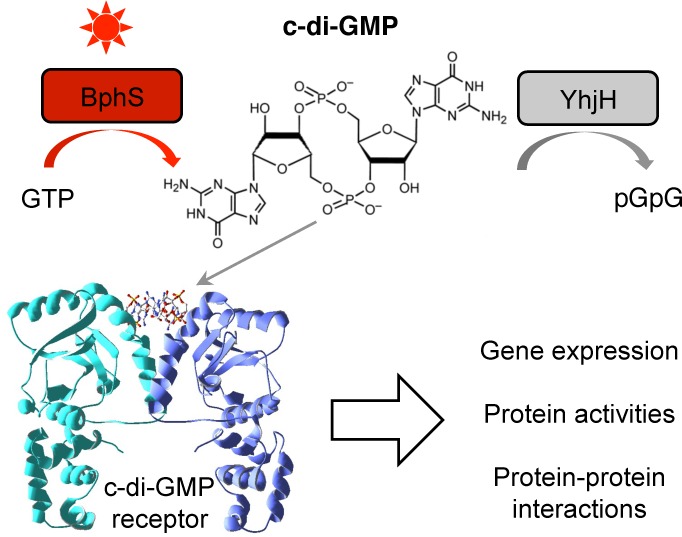- Record: found
- Abstract: found
- Article: not found
Near-infrared Light Responsive Synthetic c-di-GMP Module for Optogenetic Applications

Read this article at
Abstract

Enormous potential of cell-based therapeutics is hindered by the lack of effective means to control genetically engineered cells in mammalian tissues. Here, we describe a synthetic module for remote photocontrol of engineered cells that can be adapted for such applications. The module involves photoactivated synthesis of cyclic dimeric GMP (c-di-GMP), a stable small molecule that is not produced by higher eukaryotes and therefore is suitable for orthogonal regulation. The key component of the photocontrol module is an engineered bacteriophytochrome diguanylate cyclase, which synthesizes c-di-GMP from GTP in a light-dependent manner. Bacteriophytochromes are particularly attractive photoreceptors because they respond to light in the near-infrared window of the spectrum, where absorption by mammalian tissues is minimal, and also because their chromophore, biliverdin IXα, is naturally available in mammalian cells. The second component of the photocontrol module, a c-di-GMP phosphodiesterase, maintains near-zero background levels of c-di-GMP in the absence of light, which enhances the photodynamic range of c-di-GMP concentrations. In the E. coli model used in this study, the intracellular c-di-GMP levels could be upregulated by light by >50-fold. Various c-di-GMP-responsive proteins and riboswitches identified in bacteria can be linked downstream of the c-di-GMP-mediated photocontrol module for orthogonal regulation of biological activities in mammals as well as in other organisms lacking c-di-GMP signaling. Here, we linked the photocontrol module to a gene expression output via a c-di-GMP-responsive transcription factor and achieved a 40-fold photoactivation of gene expression.
Related collections
Most cited references45
- Record: found
- Abstract: found
- Article: not found
Bright and stable near infra-red fluorescent protein for in vivo imaging
- Record: found
- Abstract: found
- Article: not found
Phytochrome structure and signaling mechanisms.
- Record: found
- Abstract: found
- Article: not found
